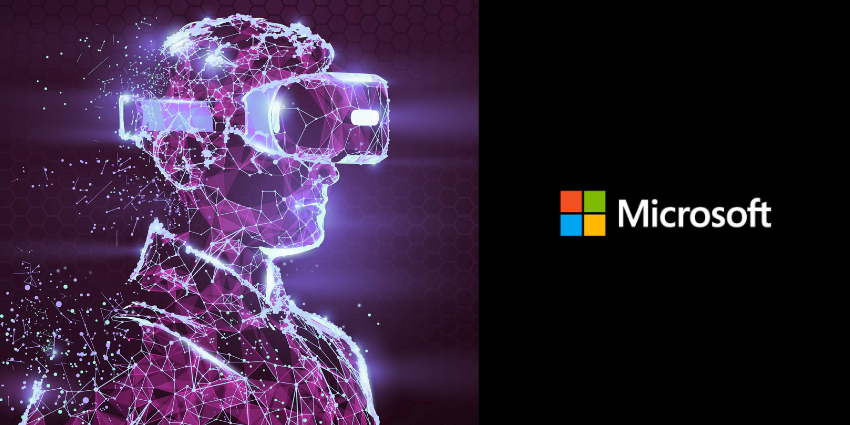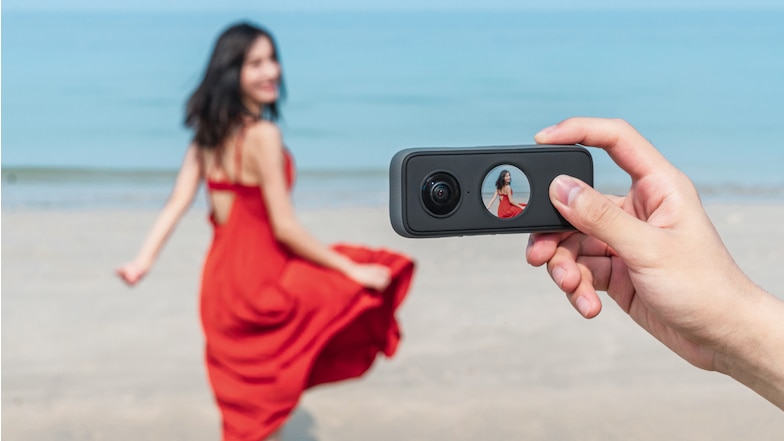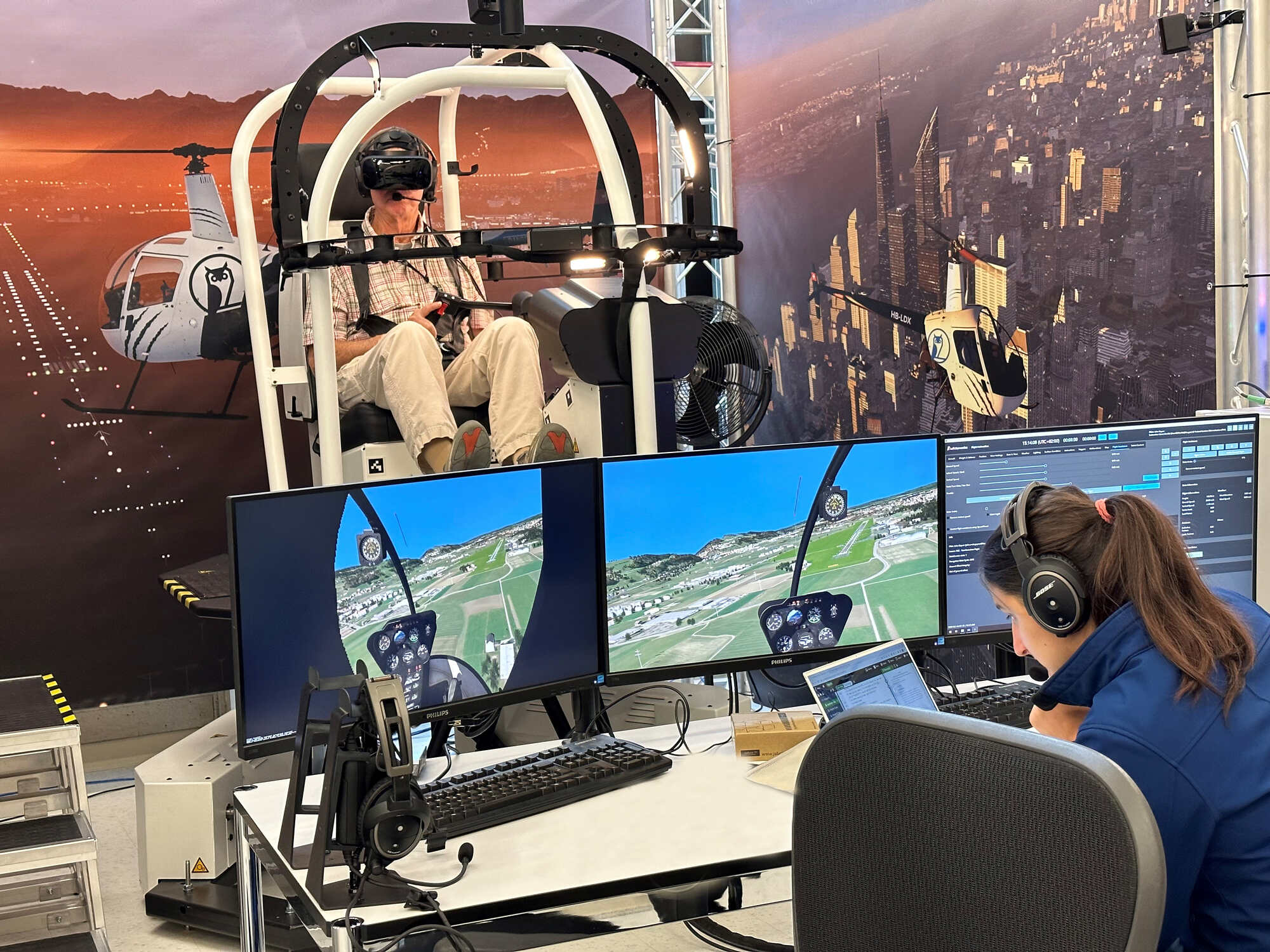Microsoft’s XR Vision for the Enterprise: The Ultimate Guide
How much do you know about Microsoft XR for enterprises? While Microsoft might not have the same selection of proprietary hardware solutions as companies like Meta, the company is still deeply invested in extended reality.
Microsoft is quickly becoming a leader in the XR space by focusing on empowering business users with immersive solutions like Microsoft Mesh, Azure Mixed Reality, Dynamics 365 spatial annotations, and even Microsoft 365 app integrations across a range of headsets.
As enterprise adoption of XR continues to grow, with countless companies using immersive technologies for training, collaboration, and productivity, Microsoft is a partner companies can’t afford to overlook. Here’s your complete guide to Microsoft’s intuitive XR solutions and the benefits they can bring to organizations across industries.
- Want to learn more about Microsoft’s XR Vision? Check out our guide to how Microsoft Mesh is transforming enterprise collaboration. Alternatively, read up on our top tips for integrating Microsoft’s XR technologies into your workflows here.
Microsoft XR for Enterprises: The Product Ecosystem
If you think Microsoft’s XR for Enterprises vision ended with the discontinuation of the HoloLens headset line – think again. From a software perspective, Microsoft offers one of the biggest collections of enterprise-focused solutions in the extended reality market. From collaborative holographic environments for teams to tools for building digital twins – Microsoft has it all.
Let’s take a closer look at some of the core components of Microsoft’s revolutionary XR ecosystem.
Microsoft Mesh: Immersive Collaboration for Enterprises
Microsoft Mesh – an all-in-one solution for immersive meetings, collaboration, and team-building experiences, is a game-changer for companies embracing hybrid work.
It offers access to a comprehensive platform where companies can build virtual workspaces, and teams can connect via lifelike avatars. With support for meetings via Microsoft Teams, events, spatial computing, and immersive audio, Mesh is re-imaging the concept of shared presence.
Built on top of the Azure cloud platform, Mesh removes the barriers of physical distance, creating flexible environments where teams can connect as though they were in the same room. Participants can experiment with interactive 3D content (such as models and holograms), paving the way for collaborative product design and training sessions.
The spatial audio capabilities even help to create a more “natural” conversational experience, helping distributed staff feel more aligned with their teams. On a broad scale, Microsoft Mesh helps enhance team engagement, inspire innovation, and deepen employee connections.
Plus, like most of Microsoft’s products, Mesh is constantly evolving. Today, businesses can even build “custom” Mesh environments for tours, employee events, product showcases, and more. Microsoft also introduced AI capabilities into Mesh to enhance avatar creation.
For instance, Accenture has used Microsoft Mesh to create a Digital Campus (One Accenture Park) where team members can access onboarding and training experiences alongside their colleagues.
Azure Mixed Reality: Custom Microsoft XR for Enterprises
Azure Mixed Reality is the comprehensive toolkit that offers companies cloud-based solutions for building, running, and optimizing XR experiences. As the backbone of the Microsoft XR for Enterprises ecosystem, Azure Mixed Reality allows companies to create and manage a range of assets, with intuitive features for:
- Digital Twins: With Azure Mixed Reality, companies create virtual replicas of digital assets such as meeting rooms or machines. These digital twins can monitor performance, predict maintenance needs, and help businesses optimize processes.
- AI Analytics: With built-in AI capabilities, companies can gain insights into everything from team or customer engagement levels, to productivity. They can even test the potential of digital products in real-time without wasting resources.
- XR Experiences: Azure Mixed Reality empowers companies to create unique, custom environments in extended reality with ultra-fast cloud-based rendering and data processing. Companies can even create bespoke XR applications for different goals – like training.
Azure Mixed Reality connects IoT devices, cameras, sensors, and other tools to the cloud, empowering organizations to take advantage of the full potential of XR innovation. With digital twins, for instance, enterprises can simulate factory workflows, monitor machinery in real-time, conduct predictive maintenance tasks, and more.
For instance, a logistics company might use Azure Mixed Reality to visualize its supply chain, enabling faster problem-solving and more informed decisions.
Azure’s AI-enhanced capabilities elevate XR experiences further by providing real-time data analysis, speech recognition, and natural language processing. This is particularly valuable in industries like retail, where companies can build personalized customer experiences in XR.
Dynamics 365 Spatial Annotations: Guiding Teams
The XR features introduced to Dynamics 365 at Microsoft’s 2023 Ignite event revolutionize task execution across industries, boosting productivity, efficiency, and safety. Spatial annotations, for instance, take the concept of “contextual insight” to the next level, allowing users to annotate “real-world” spaces with virtual diagrams, notes, and instructions.
These annotations can be anchored to physical locations and objects, ensuring they’re always accessible in the right context. For example, a maintenance worker could see step-by-step repair instructions overlaid on a piece of equipment, highlighting specific components.
Employees can share annotations instantly with staff members in the field, allowing for immersive real-time training and collaborative support. Plus, spatial annotations are integrated into Teams, making it simple for staff to work together through the platforms they already use.
Ultimately, these solutions help businesses enhance task accuracy, improve efficiency, and bring distributed teams together more effectively when working on complex tasks. For instance, imagine a scenario where a field technician needs to repair a fault with a complicated piece of machinery.
With Dynamics 365 Spatial Annotations, they can get real-time guidance from a subject matter expert and use it to accelerate fix rates. Similarly, a retail manager could use the tool to create actionable layouts for storefronts, helping staff optimize the flow of a space.
With integrated AI and NLP, users can rapidly use voice prompts to receive status updates on processes, view sequential instructions, and more. Using Azure, AI programs can even retrieve and curate documentation for headset wearers without human input.
Microsoft 365 XR Headset Integrations: Boosting Productivity
Microsoft might have laid its own collection of XR headsets to rest for now – with the discontinuation of the HoloLens headsets, but it’s still supporting other headset vendors. Although Microsoft ended support for the Windows Mixed Reality platform in 2023, it’s partnering with other XR leaders to give users access to their favorite Microsoft 365 apps in spatial environments.
For instance, with the Apple Vision Pro, employees can access Microsoft Teams and other apps like Microsoft Word and Excel within virtual environments. These apps even support cutting-edge features like Microsoft Copilot. Microsoft also partnered with Meta to create an enhanced version of its Windows and Microsoft 365 tools for the Meta Quest 3 and 3S.
Although Meta’s headsets don’t run Windows natively, they allow users to stream content from a PC or virtual PC and interact with apps naturally. With Meta’s built-in hand tracking capabilities, users can conveniently leverage virtual keyboards and screens within extended reality. The included microphones in Meta’s headsets also make it easy for users to chat with Copilot.
Microsoft isn’t just working with Meta and Apple either. The company recently partnered with RealWear to distribute its “Power Apps” tools to its line of smart glasses. Microsoft has also said it’s continuing to explore other opportunities to join forces with hardware vendors.
Microsoft’s continued commitment to ensuring its productivity apps remain accessible on XR hardware means teams can easily leverage their favorite tools across a range of headsets, boosting productivity and increasing team efficiency.
Microsoft XR for Enterprise: Industry Partnerships and Case Studies
At this point, you might be looking for some more concrete examples of what Microsoft XR for enterprises looks like in action. The good news for business leaders is that the flexibility of Microsoft’s ecosystem makes it the ideal XR partner for various industries.
Here are some real-world examples of how companies in different industries take advantage of Microsoft’s XR tools.
Healthcare: Transforming Medical Training
In healthcare, Microsoft XR for enterprises is transforming how professionals train, develop new skills, diagnose conditions, and provide patient care. For instance, a leading healthcare institution in the United States uses mixed reality headsets and Microsoft 365 Dynamics Remote Assist software to deliver personalized real-time training to surgeons worldwide.
This technology allows trainers and subject matter experts to annotate live feeds, share step-by-step guidance during training procedures, and more, reducing training costs and improving knowledge retention. Elsewhere, companies like Takeda (a biopharmaceutical brand) use Microsoft Mesh to create virtual environments designed to immerse team members in their company culture and facilitate stronger onboarding strategies.
Manufacturing: Optimizing Productivity and Innovation
Manufacturing companies are adopting Microsoft’s XR solutions, such as Azure Mixed Reality and Dynamics 365 Spatial Annotations, to revolutionize product design, development, and fieldwork. For example, the Autoliv team uses digital twins, Dynamics 365 remote assist, and mixed reality headsets to streamline product design and troubleshoot issues.
The same company even created a digital twin factory where it could provide hands-on, immersive training to new team members and technicians. Elsewhere, organizations are using Microsoft XR for enterprises to monitor factory floors and machinery remotely with digital twins, allowing for predictive maintenance and reduced downtime.
Retail: Creating Immersive Customer Experiences
In retail, Microsoft XR for enterprises allows companies to reimagine how they interact with customers. With Microsoft Mesh, for instance, companies can create custom spaces that allow them to provide customers with immersive product demonstrations or teach them how to use devices. For instance, Mercy Ships uses Microsoft Mesh to facilitate virtual tours of boats for both customers and new employees.
Microsoft Mesh also gives retail employees a chance to collaborate on product design strategies for new retail goods, without wasting resources, or worrying about travel. Plus, companies can use Azure Mixed Reality tools to access real-time AI-powered insights they can use to optimize the layout of physical retail environments and improve customer interactions.
Emerging XR for Enterprises Trends
Year after year, Microsoft XR for enterprises continues to evolve, introducing new opportunities for companies to enhance productivity, efficiency, and creativity. While Microsoft might not be focusing much on building its own XR headsets right now, it’s clearly focusing on a few key trends:
Digital Twins
Microsoft is one of the top companies exploring the benefits of digital twins for better monitoring, simulation, product development, and predictive maintenance strategies. As digital twins become increasingly essential – particularly in the industrial landscape, Microsoft is offering companies a wide range of intuitive tools to replicate products, processes, and locations virtually.
Microsoft’s Azure Mixed Reality platform makes it simple for companies to model complex environments, from virtual versions of machines, to entire workspaces. There are even AI-powered tools built into Microsoft Mesh that make it easier to create digital twins of people for more hyper-realistic, personalized avatars in meetings.
The capabilities of Microsoft’s Azure platform to provide real-time insights into product performance and critical metrics will make it even more valuable to businesses looking for ways to optimize efficiency and reduce risks with predictive maintenance moving forward.
Mixed Reality Collaboration
Few vendors have embraced the concept of immersive collaboration quite like Microsoft. The company allows employees to collaborate through apps like Microsoft Teams on extended reality devices like the Meta Quest 3 and the Apple Vision Pro. However, they also offer the comprehensive “Microsoft Mesh” platform for virtual collaboration, and training.
With customized Microsoft Mesh environments, companies can host unique training events, workshops, and brainstorming sessions. Team members can even experiment with 3D models of products in real-time, accelerating development lifecycles.
Microsoft’s Mesh case studies demonstrate just how effective the platform is at unifying teams. For instance, PWC uses a custom Mesh environment to strengthen company culture with immersive wellness experiences and intuitive meeting sessions. DXC Technology gives global team members custom environments within Mesh to work together on brainstorming sessions, product design tasks, and more.
Integrating Spatial Computing into Business Processes
Spatial computing, which merges AR, VR, MR, AI and IoT, is another major focus area for Microsoft. Most of the Microsoft XR for enterprise products include spatial capabilities. Mesh has spatial audio, and the Azure Mixed Reality platform supports spatial interaction with content, with support for hand and eye-tracking.
Microsoft’s partnerships with leading XR headset vendors also allow employees to bring spatial experiences into their day-to-day tasks. For instance, employees using a Meta Quest 3 headset can simply look down at their keyboard through their headset to connect it to their PC and start accessing apps like Microsoft Teams or Word.
Employees can swipe through screens using hand gestures – with Meta’s tracking capabilities, and interact with AI assistants like Copilot using natural speech. This all paves the way for an environment where employees can interact more naturally with the tools they use every day.
The Future Potential of Microsoft XR for Enterprises
It’s easy to assume that Microsoft lost interest in extended reality when it discontinued the “Windows Mixed Reality” platform, as well as the HoloLens headsets. However, it’s becoming increasingly obvious that Microsoft is still committed to unlocking enterprise XR opportunities.
The company is partnering with countless organizations, from software developers to hardware vendors like Meta and Apple, to make its technologies accessible in the metaverse. Not only can team members access Microsoft Teams and virtual meeting tools through XR headsets. They can also use crucial Microsoft productivity apps and interact with AI assistants like Copilot.
From a software perspective, Microsoft’s ecosystem is ideal for serving various enterprise use cases. Microsoft Mesh, for immersive collaboration, training and events, is constantly being updated with new features and capabilities.
The Microsoft Azure Mixed Reality cloud is packed with powerful solutions for building custom XR experiences and digital twins. Even Microsoft Dynamics is brimming with valuable XR features, from dynamic spatial guides and annotation tools to Remote Assist solutions for field workers.
Plus, there’s no guarantee that Microsoft won’t dive back into the hardware landscape in the future. It’s already shown it has the potential for success with the HoloLens headsets. Plus, it’s clearly open to partnering with other vendors on product design. In 2024, reports suggested that Microsoft might even be working with Samsung to create a new line of mixed reality headsets. However, it remains to be seen whether Microsoft will actually design the headsets or just provide the software.
Still, on a broad scale, Microsoft XR for enterprises shows incredible potential. If you’re looking for cutting-edge applications, intuitive software solutions, and powerful cloud platforms, Microsoft has everything you need to accelerate your XR journey.
Microsoft XR for Enterprises: Finishing Thoughts
As enterprises worldwide continue to explore the benefits of extended reality for collaboration, product design, and innovation, Microsoft is emerging as an increasingly valuable partner. Whether you’re investing in digital twins or immersive training environments, Microsoft has the user-friendly and intuitive tools you need to achieve your goals.
Quelle:



